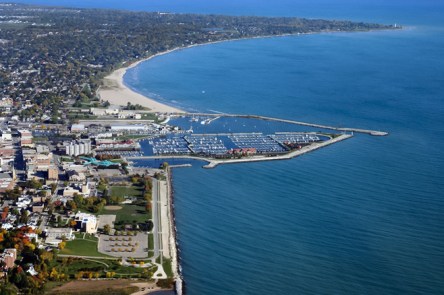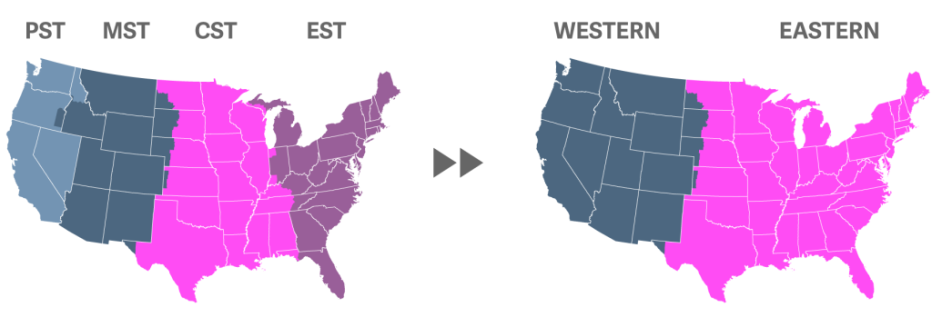Where are the most affordable places to live in the U.S.? Demographia’s 13th Annual Affordability Survey brought to light a list of affordable markets in the U.S. based on their median multiple, a number obtained by dividing the median house price by the median household income. The Median Multiple is widely used for evaluating urban markets and has been recommended by the World Bank and the United Nations. According to the survey, there are 82 affordable housing markets in the country. Racine, Wisc., is the most affordable of them this year, followed by Bay City, Mich. Decatur, Ill., Elmira, N.Y., and East Stroudsburg, Pa. America’s Kringle Capital is No. 1 With a population of less than 80,000, Racine is officially the most affordable city to live in based on median house price and median household income. If you decide to settle here, you’ll be 22 miles south of Milwaukee and 77 miles north of Chicago. Located at the mouth of the Root River, on the shore of Lake Michigan, the city is most famous for its Danish pastries. In fact, its nickname is derived from the kringle, an oval-shaped, buttery, flaky delicacy. But Racine is more than finger-licking desserts. The city boasts a zoo, a beautiful lakefront, a picturesque lighthouse, museums and historic architecture. Affordability Perks Bay City, Mich., ranks second in the top 5 most affordable cities. According to recent data published by mlive.com, the city is oversupplied, which keeps home prices and rent levels very low. City officials are struggling to eliminate blight, increase home values and attract new homebuyers. So if you’re thinking about moving to a riverfront property in a quiet town, now’s the time to do it. The third most affordable city in the U.S. this year is Decatur,...
Affordable in America...
Supply lacking, demand rising
The present is the most challenging time in 50 years for renting affordable and adequate housing. Historically low homeownership rates, the rising number of renters fueled by demographic and cultural shifts, increasing rents, a dearth of supply, growing construction costs, high levels of unemployment and underemployment and stagnant incomes have all converged to a critical point. Over 50 percent of American renters are now rent-burdened, up from approximately 40 percent in in 2000, according to the U.S Census Bureau’s American Community Survey 2000-2011. The U.S. Department of Housing and Urban Development (HUD) defines a rental unit affordable if the gross rent, comprised of rent and tenant-paid utilities, equals no more than 30 percent of the household’s income. Currently 28 percent of American renters, over 11 million households, spend half or more of their income on housing, making them severely rent-burdened, shows Harvard University’s Joint Center for Housing Studies (JCHS). Expert opinions declare that based on the traditional affordability standards the U.S. is currently facing affordable housing crisis. Housing affordability and the growing imbalance between supply and demand 2014 is the fourth consecutive year in which nationwide vacancies have decreased, clocking in at 7.5 percent in Q2 of 2014, the lowest rate since 2005 and close to 1995 rates, Census Bureau data shows. During the same time nominal rents have increased by 12.4 percent, while household incomes grew by a mere 4.3 percent, Freddie Mac uncovered. High rents and low vacancies are being fueled by the nation’s housing shortage, estimated at 1.5 million units by some. Although sustained growth in the multifamily sector has brought back development to historical averages with 386,000 units underway as of July 2014, due decreased construction during the Great Recession, Freddie Mac predicts that over the next decade a yearly...
Time for a Change?
Should the American time zone system be rethought?
When CNN listed time zone reduction on its 10 Ideas, readers like me smiled politely and continued to the next article. Big changes don’t happen often in our society and they certainly don’t happen quickly. Changing American time zones seems incredibly unlikely unless we’re convinced that it would make our lives exponentially better and, of course, not lead to national disaster. An America with two time zones could definitely make our lives easier. It won’t cause national chaos, either. As a matter of fact, the US did not instate our current zone system until 1883. We weren’t introduced to daylight savings time until 1918. Everyone survived. Allison Schrager’s proposal would eliminate daylight savings time entirely. It would also unite the US by two time zones with Eastern Time one hour ahead of Western Time. Adverse effects would be minimal. It may be brighter or darker outside at dinnertime but we already experience that at the solstices. As for positive effects, eliminating time zones could help businesses save time and money in several ways: Businesses would not need several call center locations or shifts to staff their offices. With only one hour differential between coasts, one team on either coast could service the entire nation. Streamlined marketing simplifies social media updates, push notifications, and other outreach efforts. Webinars and conference calls become easier to schedule, particularly when making calls to states that straddle more than one time zone such as Texas, Tennessee and West Virginia. Employee productivity stands to increase with the implementation of a two zone system. Fewer working hours are lost when traveling between coasts. Employees will also be able to transition more smoothly without jetlag, boosting productivity and creativity. No more nodding and smiling while sleeping with your eyes open. Businesses could lose less money to airlines, likely saving millions when employees must change flights due to scheduling errors. According to the US Department of Transportation, airlines gained more than $2.5 billion in ticket-change fees in 2012 alone. Businesses lose countless hours of productivity during major sporting events. Sports fans alter their work schedules—generally leaving early and reducing productivity—in preparation for games. When competing teams are from different time zones, games are scheduled to appease the most viewers, requiring compromise (thus altered work schedules) on both extremes. Without a three-hour time difference, major sporting events could be scheduled at times that do not interfere with typical business hours. There is also the matter of national equality, which has farther reaching effects than commerce. The eastern-most time zones hold large populations and greater political influence; most swing states are located along the East Coast. As a result, federal elections are generally “called” hours before polls on the West Coast have closed. West Coast poll closings are anticlimactic at best. At worst, decisions are influenced by results from the opposite coast. The one hour differential could notably level the playing field. Do you think a two time zone system could work for America? What drawbacks could come from the...



